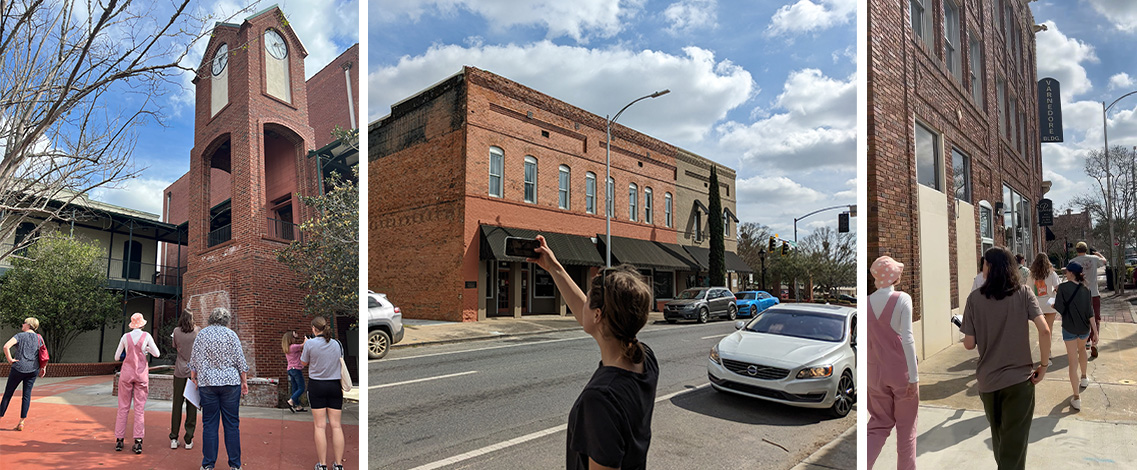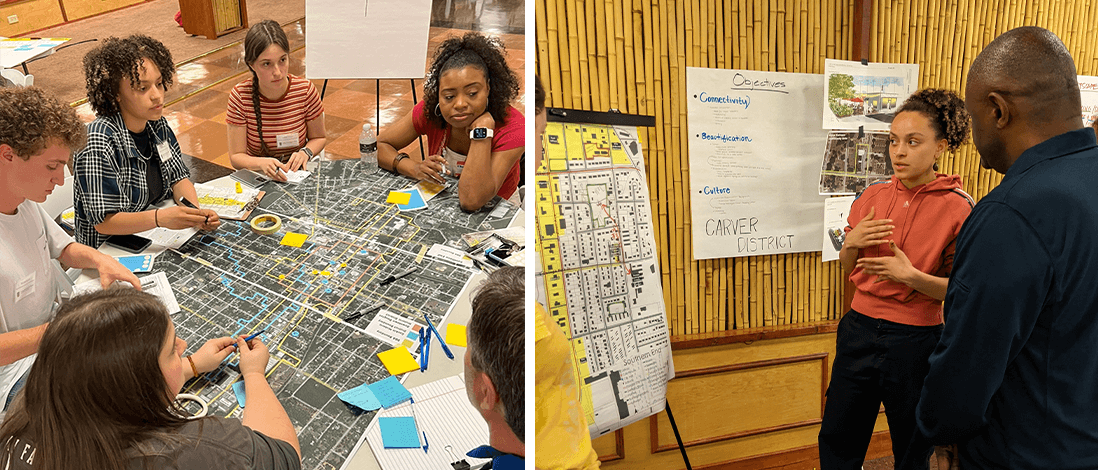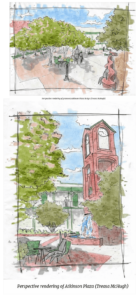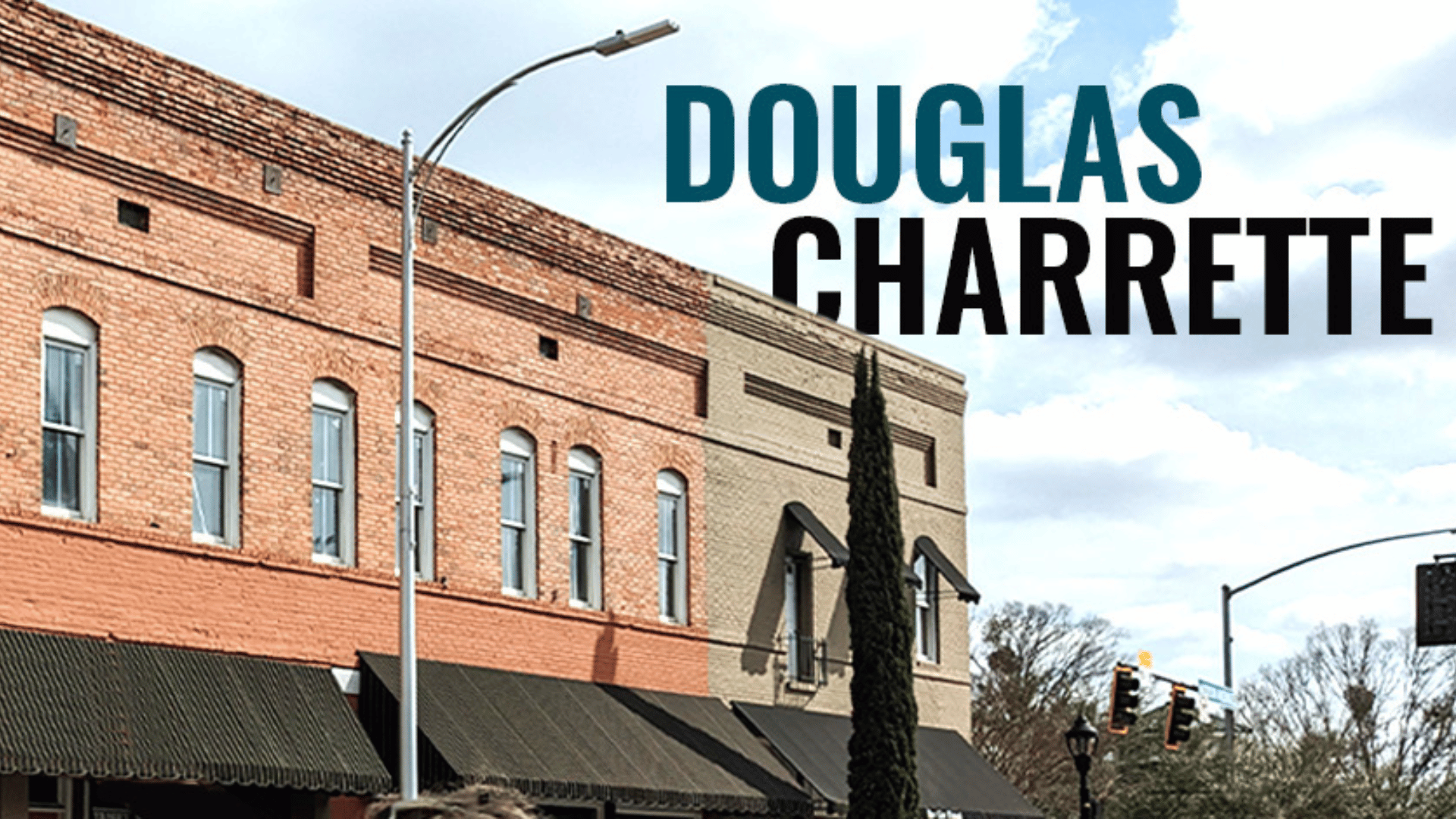The CCDP recently took a team of 17 CED students down to Douglas, GA, for our spring design charrette. The Downtown Development Authority of Douglas requested our help in creating a cohesive vision that addressed revitalization potential, corridor enhancements, and infill housing. The weekend began with a tour of the downtown area and its commercial gateways, followed by a community input session attended by 30 local stakeholders. The students facilitated a mapping analysis that asked locals what elements of downtown were worth keeping and which needed fixing. Also, residents were asked to imagine that they were returning to Douglas after 10 years and describe what they hoped to see.

After the stakeholder feedback, the charrette team began to coalesce the information gathered into broad categories of need: Greenspace & Greenways, Entertainment & Placemaking, Streetscape & Circulation, Preservation & Housing, and a special focus on an African American cultural district. CCDP Director and charrette facilitator Jennifer Lewis asked each student group to determine a handful of big ideas to be broken down into small wins achievable through strategies like tactical urbanism. Concepts included temporarily closing streets or parking spots to allow for outdoor seating and nightlife, incorporating container plantings to beautify the downtown, fostering an interest in upper-story living through tours, and prioritizing plaza seating over a few parking spaces.
Because Douglas lacks a traditional courthouse square or central gathering spot, the charrette team recommended a downtown park on the block that the jail will soon vacate. Concepts include a pedestrian plaza, a parking deck, new multi-use buildings, an outdoor amphitheater, space for food trucks, and a children’s play area reminiscent of the railroad that used to run through the space.
Along the Douglas Greenway Trail – which runs parallel to downtown but gets minimal use – the UGA students suggested promoting bike access for nearby South Georgia State College students, who could use their ID cards to rent bikes and ride to Downtown for shopping and dining out. Enhancing the Trail with necessary features like lighting and seating were also suggested as well as envisioning public event and entertainment spaces in pocket parks adjacent to the trail.

Important places in the historically African American Carver District – named after the George Washington Carver Shopping Center and the school district’s Carver Freshman Campus that anchor the neighborhood – were showcased for the potential to celebrate Black culture. The team suggested increased access to the Rosenwald School building, removing unnecessary barbed wire from the fencing around the school campus in favor of student art, and developing a gathering space for food trucks and picnic tables in an empty lot adjacent to the Farmers Market.

Using a preservation-based approach to the creation of more housing, the team targeted key 2-story buildings Downtown to show the potential for loft development and showcased methods for increasing affordable housing in historic neighborhoods through good infill. Preservation was also shown to be beneficial for historic, auto-centric buildings within the corridor gateways. The students used two historic gas stations to demonstrate how they could be rehabilitated into a restaurant and a fitness club.
Students benefitted from the charrette by learning new skills and applying their knowledge to a real-world application. After the charrette, one student shared, “Participating in the charrette allowed me to practice working in a group, quickly rendering design ideas with hand graphics, communicating with stakeholders, and presenting research and deliverables.” Another remarked, “I am really grateful for the opportunity to get to work with a community and act as an advocate for the Carver district. That is why I got into landscape architecture and hope to get into planning in the future. I love interacting with the community and trying to help generate fresh ideas for solutions to issues known and unknown.”
The CCDP team is now working on the next steps in the charrette process – refining plans, maps, and graphics; conducting feedback surveys; and creating a final report that will be shared with the public and on their website.

